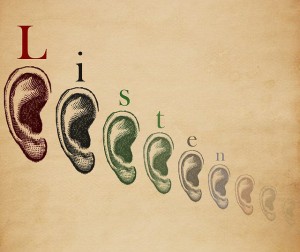With Microsoft recently announcing that social listening will be a key component of its spring 2014 release, following last year’s acquisition of Netbreeze, and Salesforce.com’s Radian6 already a well-established part of their marketing cloud, social listening capabilities are set to become an increasingly important part of the CRM portfolio. But what is social listening and how can it help?
If we go back in time, companies largely had control of what was said about their products and brands using advertising to project the image and messages that they wanted customers to receive. With the advent of social media such as Twitter, Facebook Google+, YouTube, Pinterest, blogs and forums, brand owners no longer had control of what was said about their products and services, and those conversations can be very powerful in shaping our perceptions and purchase decisions.
Social listening applications effectively monitor those conversations across a wide range of social channels and report back mentions of specified key words and phrases, as well as whether the associated sentiment was positive or negative. These capabilities have a range of potential beneficial uses including:
Addressing complaints and issues – it allows companies to identify dissatisfied customers and engage with them to address their issues, retain them as a customer and reduce the impact that their complaint may have on other potential purchasers. This is also becoming more important as customers increasingly expect to be able to log issues through social channels rather than be limited to traditional channels such as the phone.
Spotting new opportunities – it allows users to identify potential sales leads by picking up conversations that prospective customers are having when contemplating a new purchase, for example ‘Can anyone recommend a (insert relevant product/service)?’ type conversations.
Finding influencers – as I mentioned in a post about influencer management a few months ago, understanding and nurturing influencers can be a very effective strategy. Social listening tools can be helpful in not only identifying who is talking about you, both positively and negatively, but how influential they may be, for example through analysis of follower counts and social influence scoring services such as Klout.
Providing feedback to marketing – it allows the marketing team to monitor how effective its campaigns are in generating social buzz.
Delivering competitor intelligence – social listening can not only provide information about your own products and services, but can also be an excellent source of information about competitors
While social listening doesn’t have to be a part of your CRM system, there are potentially huge benefits to integrating the two. Salesforce.com’s integration with Radian6, for example, allows users to automatically create contacts and cases within the system and intelligently route them to the appropriate staff member, for example the customer support team for a complaint, or the sales team for a new lead. Responses to posts can also be generated from within the system in order to maintain the history of interaction.
Microsoft doesn’t appear to be offering this level integration with their initial release, but I’d expect this to happen later in the year, and I suspect generally we will see a lot more integration between social listening applications and mainstream CRM platforms over the coming months.
Given the potential power of social listening applications, particularly when integrated into your CRM system, and their relevance not only to business to consumer, but also business to business, and non-profit organisations, if you’re not already using or considering them, then these tools may well deserve come careful evaluation.




